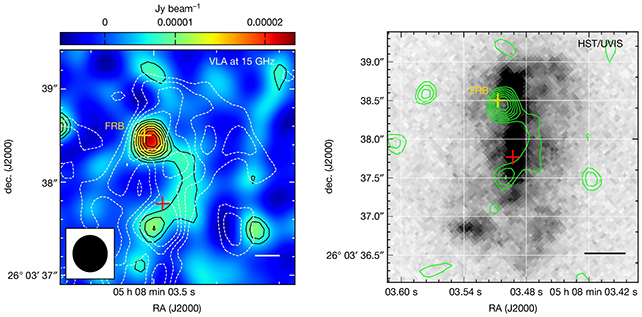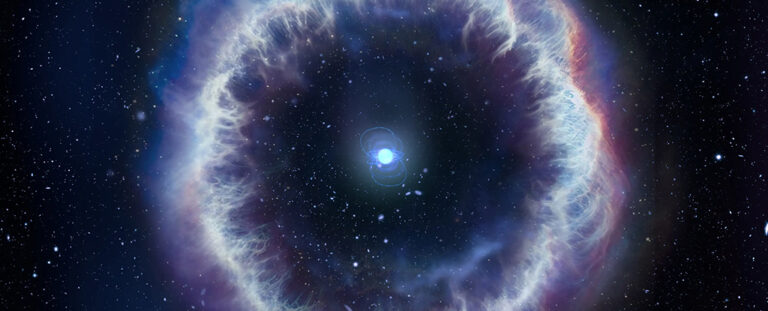Scientists Pinpoint Likely Origin of Mysterious Energy Surrounding Fast Radio Burst
The FRB 20201124A was discovered in 2020 and a team of researcher from the INAF Istituto Nazionale di Astrofisica have analyzed the PRS associated with FRB.
Recently, clues of PRS have been detected nearby a handful of FRBs and they seem to be very much associated with them. The characteristics discussed above show that the PRS is probably being generated near a plasma bubble associated with the FRB’s mysterious source. This plasma bubble is what astronomers term as ionized nebula, which is just a ‘cloud’ of gaseous and dust particles.
According to INAF Astrophysicist, Gabriele Bruni, “By studying the radio observations of one of the closest bursts, we detected the weak persistent emission from the same location as the FRB, extending the range of the radio flux for such an object by two orders of magnitude.

The investigation employed the information of the VLA Radio Telescope of New Mexico, and the notion was that the formation of the nebula could be due to a young magnetar or a binary system with a neutron star or black hole. Each of them could potentially produce the amount of energy required to produce the FRBs observed today. The glowing cloud, or the plasma bubble, may also originate from these processes. I couldn’t help but wonder, where does the surrounding nebula fit into all of this?
However, there are questions about FRB 20201124A; nonetheless, this research comes with a lot of contribution to the subject under consideration. Perhaps, each of the detected FRBs has a different nature, but this research helps to solve at least one case.
Astrophysicist Brendan O’Connor of Carnegie Mellon University explains: With high resolution data, the emission is not widespread and distributed over a large patch in the host galaxy as typical for star formation The data also helps to determine size of the source, which fits into the expected size of a magnetar nebula.
Additional information from telescopes belonging to the Northern Extended Millimeter Array (NOEMA) and Gran Telescopio Canarias helped the scientists to study the radiated energy across the spectral range. It elaborative to understand decoded signals of more than billion light years away from the Earth.
New radio wavelength data with better angular resolution is available providing a clearer picture like the transition from 720p to 1080p is made by O’Connor, As this higher resolution allows us to localize the source’s activity better.
The research has been published in Nature.
Do not forget to share your opinion with us to provide you with the best posts !




0 Comments